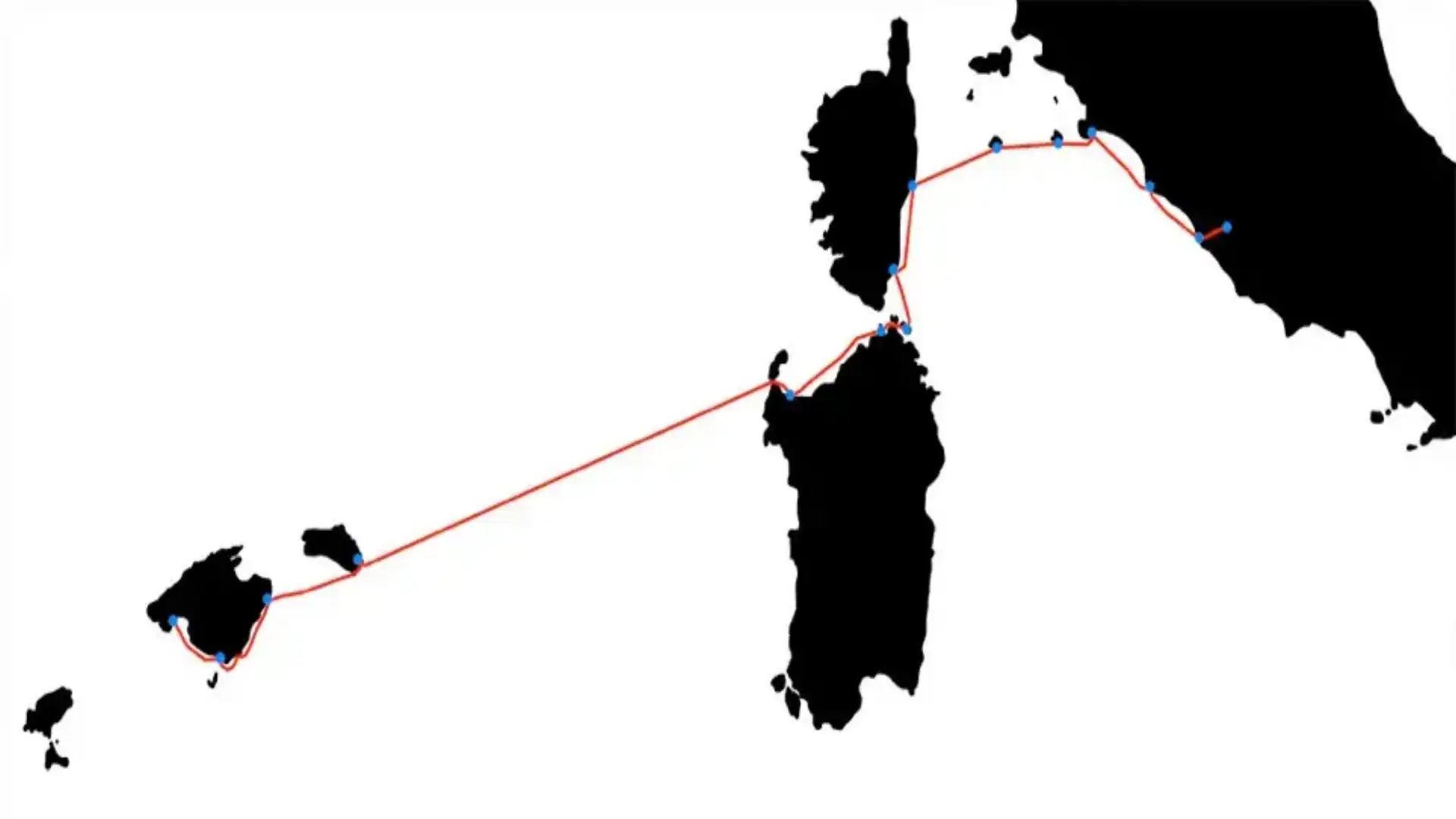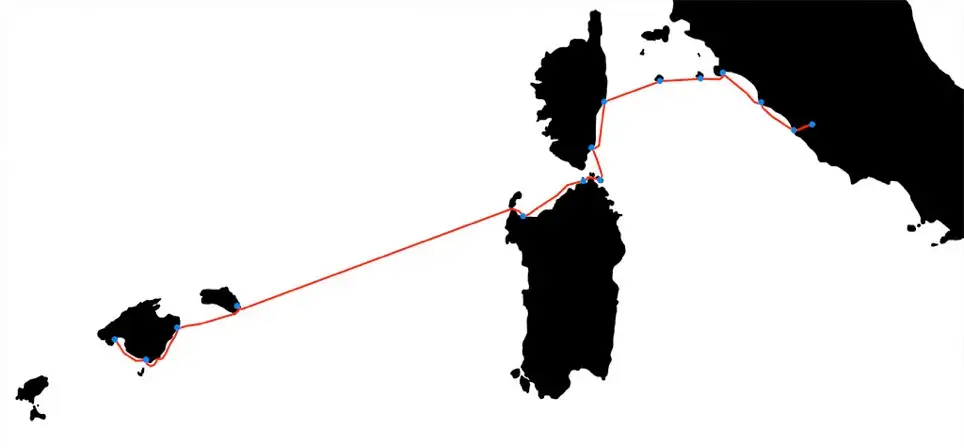
Trip between Palma and Rome in Piragua to win the Jubilee
Trip between Palma and Rome in Piragua to win the Jubilee
"We've been training for a long time and are ready for the journey of the crazy." The Alpinist, triathlete and background runner Carlos García has full confidence in overcoming the challenge of going through the 580 miles that separate the Royal Nautical Club of Palma of Rome in piragua, and thus remember the historic feat that 18 students of the SEU of Madrid made in 1950 to win the Jubilee. He will be accompanied by two other elite athletes, the Spanish champion of sea kayac in 2015, Álex Aguera, and José Bello, professor of the National School of Trainers of Piragüismo. The adventure, which was presented this noon at the Royal Nautical Club in Palma, will begin today, at 12 noon, after a priest, following the same liturgy of 66 years ago, bless the pyrages and propose the phrase, "To Rome, boys!."
The three defiants will also count on the encouragement of one of the only three survivors of the original journey, Marcelino Araújo, 89, the youngest of the 18 students of the SEU who, without having just bounced in a kayak, were made to the sea on August 15, 1950 with the goal, colossal for the time, of reaching the Vatican.

José Bello, Alex Aguera and Carlos García, in the RCN Palma.
Marcelino, who has moved to Palma from his residence in Aranjuez to be at the exit of the second "journey of madmen," has been given a metopa from the Real Club Náutico de Palma and has said that, although he will hang it in his house, "it is a recognition for all of us who were there," in reference to his 17 companions.
This university professor of chemical science has remembered, visibly excited to evoke his youth, that in the middle of the 20th century there was no figure of what is now known as an elite sportsman, although in his case he shared the practice of many disciplines with studies. "I was swimming, but only when time allowed, because there were no indoor pools; also basketball and another kind of rowing that had nothing to do with kayak. If I had to run, I would run, and if I had to jump, I would jump, but nothing compared to the preparation that exists today."

The moment of arrival in Rome in 1950.
Same route
Carlos, Álex and José will follow the same route of the first edition, but they will sail on a K1 type, that is, a single person, in front of the K4 of 1950. The first stage will join Palma with Cala Rajada. From there, if time allows, the palists will cross the Menorca Canal to Mahon, and then cross the longest and most complicated section to Sardinia. The following stops will take you to Corsica, before reaching the Italian peninsula and remounting the Tiber River to Rome. The adventurers will be accompanied by a support ship (a 42-foot sailboat) and will carry out relays every five hours, each in their own adapted pyre.
Alex Aguera and Carlos Torres have already carried out extreme voyages in piragua, with continued navigations of more than 30 hours and strong tidal, so they see it perfectly possible to repeat in their way the feat of Marcelino and his companions. This will, however, be the longest journey they have made together. Despite technological advances, the three athletes who will leave the RCNP tomorrow are aware that the singles waiting for them at the bow remain a "small madness," hence their project has been officially named "the journey of the madmen."
In the event held in the RCNP, Alejandro Sans, son of Pepín Sans, one of the remers of the already deceased SEU, was also present. His research on the feat in which his father was involved, who was also a designer of the three piranguas of the first challenge, led him to publish a complete blog (www.piraguaspalmaroma.com) which has served to inspire, 13 minutes and a year later, this new and exciting adventure. Manuel Fraga, RCNP's sports director, was in charge of handing over the metopa to Marcelino Araújo and, after leaving with him and the three new defiants, said that both the old and the current "are just as exciting."
ETAPAS
1. Palma de Mallorca - Puerto de Campos (Colonia de Sant Jordi, Mallorca, Spain)
2. Ports of Campos (Colonia Sant Jordi) - Cala Ratjada (Mallorca, Spain).
3. Cala Ratjada - Mahón (Menorca, Spain).
4. Mahón - Porto Torres (Sardinia, Italy).
5. Porto Torres - Cabo Testa (Sardinia, Italy).
6. Cabo Testa - La Magdalena (Sardinia, Italy).
7. La Magdalena - Golfo Pinarello (Corsica, France).
8. Golfo Pinarello - Laguna Diana (Corsica, France).
9. Laguna Diana - Montecristo Island (Italy).
10. Montecristo Island - Giglio Island (Italy).
11. Giglio Island - Porto Ercole (Italy).
12. Porto Ercole - Chivitavecchia (Italy).
13. Chivitavecchia - Fiumicino (Italy).
14. Fiumicino (Tiber River) - Rome (Italy).
15. Hearing with His Holiness Pope Pius XII (Castelgandolfo).
16. A few days in Rome, back to Madrid, recognition and end of the adventure.
© 2024 Nautica Digital Europe - www.nauticadigital.eu












